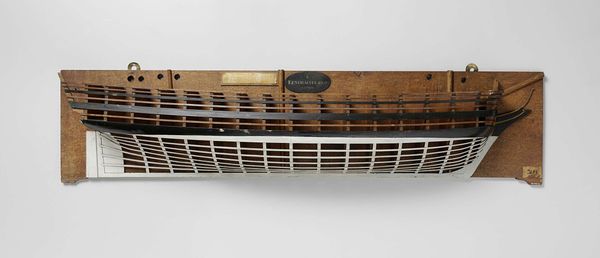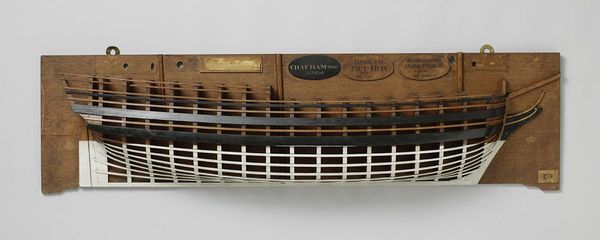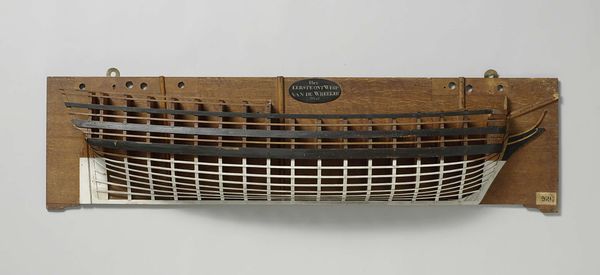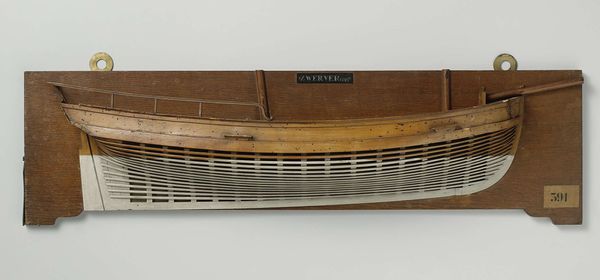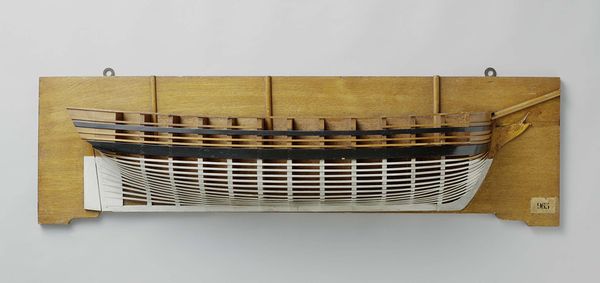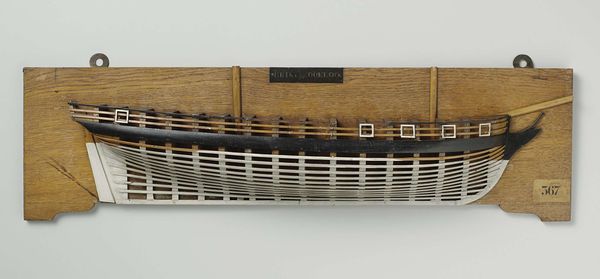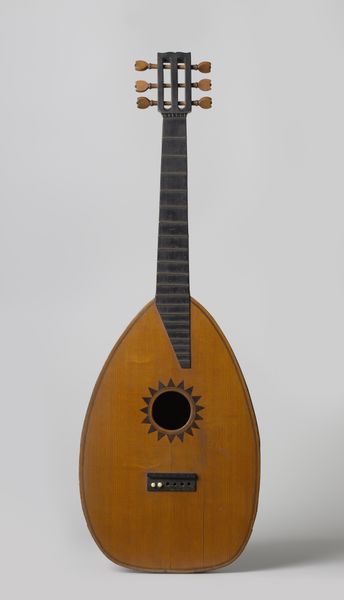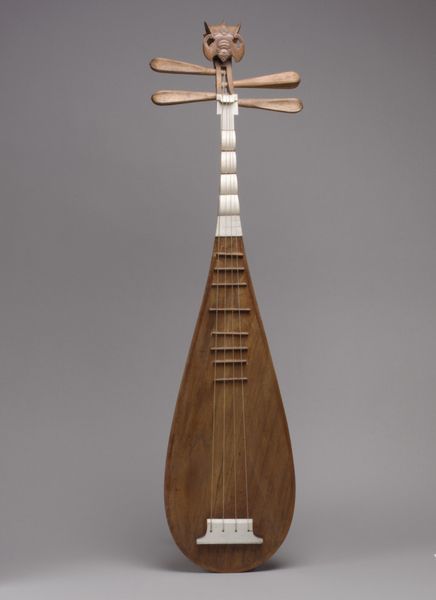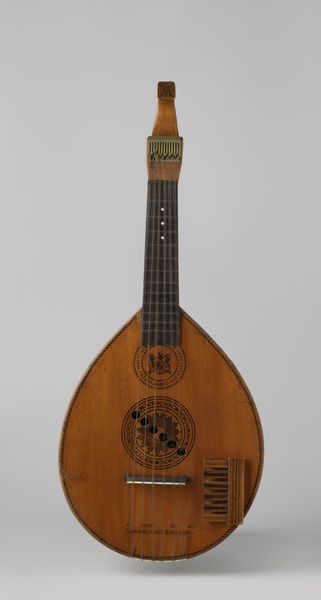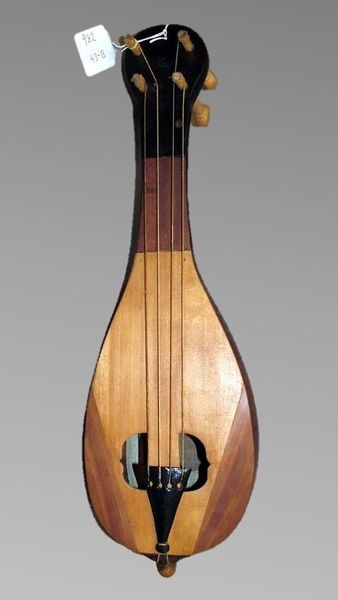
fibre-art, weaving, textile
#
wood texture
#
fibre-art
#
weaving
#
textile
#
organic pattern
#
wooden texture
Dimensions: 36 7/8 × 16 × 3 1/8 in. (93.66 × 40.64 × 7.94 cm)
Copyright: No Known Copyright
Editor: This is "Shield," dating from the mid-20th century, credited to the Budja people, and crafted from wood and textile. It's interesting, because it immediately calls to mind its obvious purpose—protection—but its woven design seems so delicate. What do you see in this piece? Curator: It’s crucial to understand how seemingly contradictory elements—protection and delicacy, function and artistry—are interwoven in works like this shield. Consider how concepts of defense, particularly in Indigenous cultures, are so often tied to profound cosmological and spiritual beliefs, reflecting an interconnectedness with the natural world and ancestral heritage. Shields such as this may have been as symbolic as they were utilitarian, speaking to layered forms of resistance. Editor: That's interesting. It’s easy to focus on the surface aesthetics, but what you’re saying prompts a deeper inquiry. Curator: Exactly. Ask yourself: How does this shield act as a site of cultural resistance, challenging dominant narratives and asserting Indigenous sovereignty through its very existence? Think of the history embedded in its making—the specific weaving techniques, the locally sourced materials, passed down through generations. The organic patterns embody lived experience and reflect knowledge production that actively challenges colonial erasure. Editor: So, it becomes more than just an object of protection. It’s a statement. Curator: Precisely. It's a claim to cultural endurance and self-determination. Considering its original use in communal life, does it evoke a sense of continuity, or of rupture, considering the shifts imposed by colonialism? Editor: I hadn't thought about it that way. Looking at the weaving, I am trying to imagine the hands that worked on it. Curator: And that labour carries immense weight, speaking to resilience. Looking closer challenges the erasure embedded in museum display practices which often present such objects devoid of context. Editor: I’m definitely walking away with a new appreciation for how much context and meaning can be embedded in even the simplest-seeming works. Curator: And hopefully a commitment to question and expand those frameworks in all art forms.
Comments
minneapolisinstituteofart over 1 year ago
⋮
African shields, while primarily functional objects used in warfare, also played a role as dance regalia during funerals and initiations, and served as status objects and symbols of identification. Because they were often made for ostentatious display, their appearance—size, decoration, color, and materials—was of vital importance. As such, shields can be appreciated as sculptural expressions of creativity and craftsmanship, blurring the line between utilitarian skill and fine art.
Join the conversation
Join millions of artists and users on Artera today and experience the ultimate creative platform.
